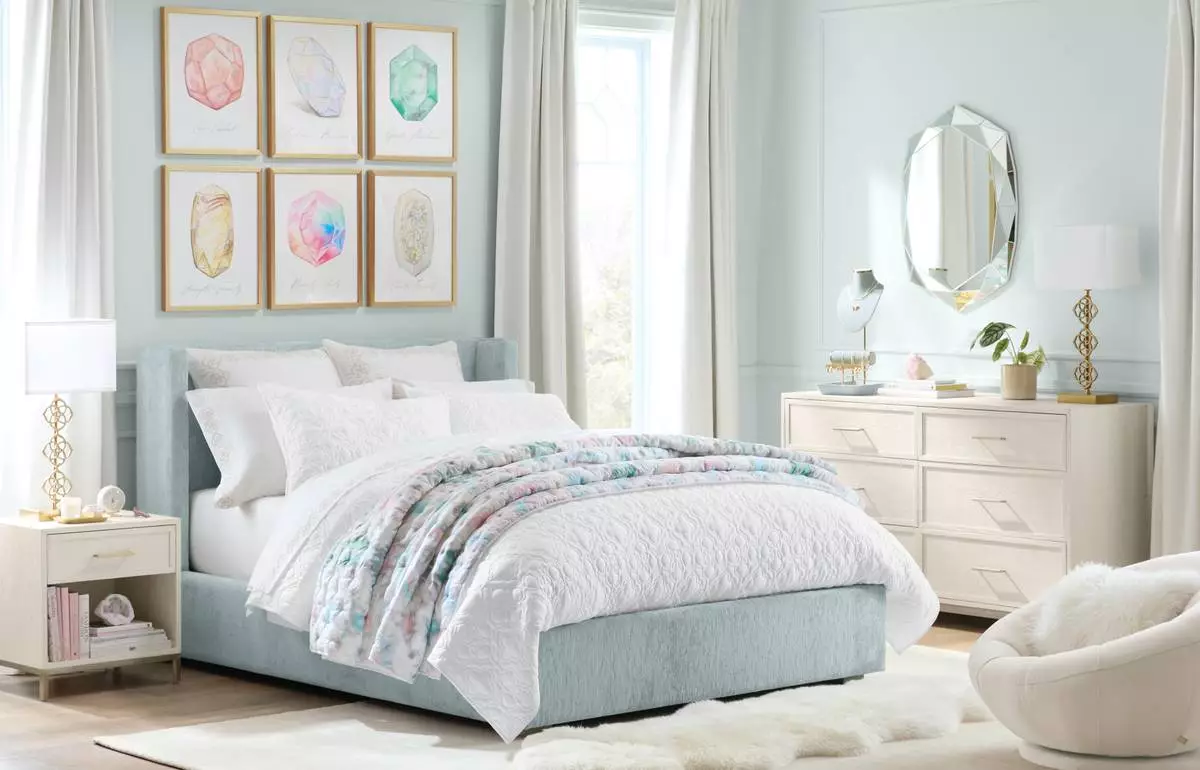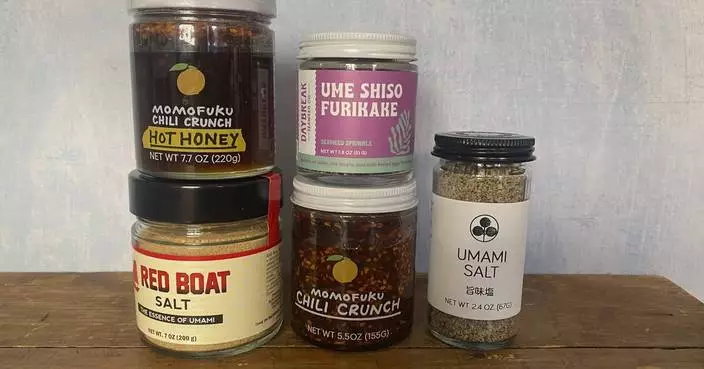President Donald Trump makes no secret of his love of tariffs. He heralds them as a way of bringing in revenue, striking back at countries he sees as taking advantage of the U.S. in trade, and as a cudgel to push countries to do what he wants. Even Canada and Mexico have been handed heavy taxes.
On April 2, Trump announced far-reaching new tariffs on nearly all trading partners, only to roll most of them back on April 9 after the stock market tanked.
Still, he claims that tariffs, a tax on imported goods, are bringing in billions of dollars a day. On April 8, speaking at the National Republican Congressional Committee Dinner, he said, “We’re making a fortune with tariffs. $2 billion a day. Do you believe it? I was told $2 billion a day.”
Here's a look at the facts.
—
CLAIM: The U.S. is earning $2 billion per day from tariffs.
THE FACTS: That's false. Trump began raising tariffs in February. That month, about $7.247 billion in customs duties were collected, or $258.82 million per day. In March, the most recent monthly figure available, a total of about $8.168 billion in customs duties was collected, or approximately $263.48 million per day. A customs duty is a type of tariff.
U.S. Customs and Border Protection said in an April 8 statement that as a result of 13 tariff-related presidential actions taken by Trump, it was collecting each day “over $200 million in additional associated revenue.” The agency is responsible for collecting tariffs.
Those numbers are in line with what the U.S. has taken in thus far during fiscal year 2025, which started Oct. 1 under the Biden administration. According to the latest Treasury Department numbers, $56.215 billion in customs duties and certain excise taxes have been collected, or $283.91 if broken out per day. An excise tax is also a type of tariff.
The U.S. has collected approximately $3.076 billion in customs and certain excise taxes so far this month, coming out to about $180.94 million per day, according to the Treasury Department’s data.
Economists suggest that Trump’s number is likely based on the value of imported goods from fiscal year 2024, disregarding the impact higher tariffs will have on supply and demand.
“It’s almost certainly the case we’re collecting less than that," said Robert Johnson, an associate professor of economics at the University of Notre Dame, of Trump's $2 billion per day figure.
The U.S. took in about $3.3 trillion worth of goods in fiscal year 2024, according to the Bureau of Economic Analysis. Applying the average tariff rate Trump announced on April 2 — 20% — to that figure comes out to $660 billion worth of revenue. That’s roughly $1.8 billion per day.
But, economists note, this calculation does not account for behavioral changes. For example, if tariffs increase and make a product less profitable, importers may cease importing it altogether. And if consumers face higher prices due to increased tariffs, they may choose not to buy certain items.
“That’s the most optimistic scenario, because that won’t happen,” said Felix Tintelnot, an associate professor of economics at Duke University, of Trump’s $2 billion figure. “You can’t do a calculation of expected tariff revenue off past trade flows and then multiply with it a currently applied tariff and expect that the past trade flow remains the same.”
Ryan Monarch, an assistant professor of economics at Syracuse University, agreed, noting, “it’s a very bad assumption to assume that purchases are just completely unchanged.”
Not to mention, it is U.S. importers — American companies — that pay tariffs, not foreign governments. That money goes to the U.S. Treasury and those companies, in turn, typically pass their higher costs on to their customers in the form of higher prices.
Still, tariffs can hurt foreign countries by making their products pricier and harder to sell abroad. Foreign companies might have to cut prices — and sacrifice profits — to offset the tariffs and try to maintain their market share in the U.S.
This story was first published April 18, 2025. It was updated on April 21, 2025, to correct that the U.S. would take in $660 billion from imported goods, not $660 trillion.
Find AP Fact Checks here: https://apnews.com/APFactCheck.

Shipping containers are seen at Port Jersey, Friday, April 18, 2025, in Jersey City, N.J. (AP Photo/Julia Demaree Nikhinson)
SAN FRANCISCO--(BUSINESS WIRE)--May 1, 2025--
Pottery Barn Teen, portfolio brand of Williams-Sonoma, Inc. (NYSE: WSM), the world’s largest digital-first, design-led and sustainable home retailer, today announced a collaboration with founder Kendra Scott and her eponymous brand. Kendra Scott’s designs are known and beloved for their unique use of stones, innovation in color and iconic silhouettes. For the inaugural home collaboration, Kendra Scott is bringing its signature style to teen bedrooms, lounge spaces and college dorms in partnership with Pottery Barn Teen through expertly crafted furniture, organic cotton bedding, no nails wall décor, jewelry storage, backpacks with coordinating lunch bags, and decorative accessories. The bold and colorful collection features shapes, colors and materials from Kendra Scott’s signature designs, now available exclusively at Pottery Barn Teen.
This press release features multimedia. View the full release here: https://www.businesswire.com/news/home/20250501818689/en/
“The Kendra Scott brand has inspired its incredibly dedicated fan base of teens and college students,” said Jennifer Kellor, President, Pottery Barn Teen. “Our collaboration is designed to reflect positivity and brings the colorful Kendra Scott aesthetic into living spaces through jewelry-inspired home designs crafted with quality and style.”
Kendra Scott’s experience as a mom along with her eye for design helped shape the collection to focus on both function and style. With college students of her own, Scott worked with Pottery Barn Teen to create trend-forward storage, wall décor that does not require nails and a patterned washable rug for a design statement with added convenience.
"As a jewelry designer, home décor and creating spaces that reflect personal style have always been a passion of mine. I'm thrilled to partner with Pottery Barn Teen to bring our first-ever collection to life. College is such a transformative time for so many, and through this partnership, I wanted to incorporate our signature designs into the décor space in a way that’s both functional and vibrant. We hope this collection inspires individuality and creativity, giving you the pieces to make any room truly feel like your own,” said founder Kendra Scott.
For more information, please visit www.potterybarnteen.com. Follow along on social @potterybarnteen and @kendrascott.
ABOUT WILLIAMS-SONOMA. INC.
Williams-Sonoma, Inc. is dedicated to enhancing the quality of life at home and at all places our customers work, stay and play. The company’s brands — Williams Sonoma, Pottery Barn, Pottery Barn Kids, Pottery Barn Teen, West Elm, Williams Sonoma Home, Rejuvenation, Mark and Graham, and GreenRow — represent distinct merchandise strategies that are marketed through e-commerce, direct-mail catalogs and retail stores. These brands collectively support The Key Rewards, our loyalty and credit card program that offers members exclusive benefits. We operate in the U.S., Puerto Rico, Canada, Australia and the United Kingdom and have unaffiliated franchisees that operate stores in the Middle East, the Philippines, Mexico, South Korea and India.
ABOUT POTTERY BARN TEEN
Introduced in 2003, Pottery Barn Teen offers home furnishings and solutions to create spaces that reflect who teens are and how they live. Available online and in stores globally, Pottery Barn Teen brings the best in quality design with a focus on eco-friendly and sustainable materials that have a low impact on the environment. Pottery Barn Dorm, launched in 2010, is Pottery Barn Teen’s offering of dorm furniture and essentials with the same quality and commitment to style. Pottery Barn Teen is a member of Williams-Sonoma, Inc. (NYSE:WSM) and participates in The Key Rewards, a free-to-join loyalty program that offers members exclusive benefits across the family of brands.
ABOUT KENDRA SCOTT
Kendra Scott LLC was founded in 2002 by Kendra Scott, who serves as Founder, Executive Chairwoman and Chief Creative Officer of her namesake lifestyle brand. Known for its design and material innovation, use of color, and signature shapes, Kendra Scott offers Fashion, Demi-Fine and Fine Jewelry, watches, engagement rings, fragrance, home accessories, a men’s collection, and a western-inspired line, Yellow Rose by Kendra Scott. The company remains true to its founding philosophy of “Family, Fashion, and Philanthropy,” and has donated over $70M in monetary and in-kind donations to philanthropic organizations since 2010. Kendra Scott’s customer-centric omni-channel approach includes a network of 150+ namesake experiential stores and pop-up locations, wholesale partners, including Nordstrom, Bloomingdale's, Dillard’s, and 850+ specialty boutiques. With over 3,200 employees, the Austin-based company was honored as one of Newsweek’s Top 100 Most Loved Workplaces in 2022, 2023 and 2024. Learn more at KendraScott.com.
WSM-PR


Kendra Scott x Pottery Barn Teen (Photo: Pottery Barn Teen)




















































